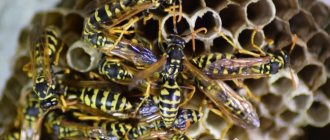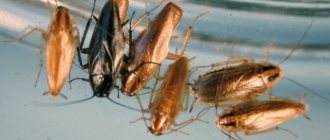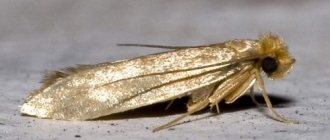Practice shows that if there is a rat in the house, and even more so several rats, then they will not leave on their own, and will constantly appear in the kitchen or basement, manage in pantries, spoil food and leave fleas and their excrement (often containing pathogens of dangerous diseases). In all such cases, it is necessary to catch the rat as soon as possible, and in order not to risk the health of the residents, it is advisable to begin this task as soon as the first signs of the presence of a rodent in the house are discovered.
Fortunately, today there are many ways to get rid of rodents indoors quickly and without much hassle. Moreover, for this it is not even necessary to buy an industrial rat trap or a dangerous poison - it is quite possible to catch a rat in the house with a homemade device or in a way that does not require significant financial costs.
Next, we will look at several effective ways to catch a rat both at home and in the office, warehouse, barn or, for example, in the garage...
Precautions before fishing
Rodents spoil food and things and are aggressive towards humans. Their bites or contacts can cause up to 20 types of deadly infectious diseases (Rat bite - why it is dangerous and what to do after the bite, read more in the article here). For safety reasons, before catching it is important:
- Wear construction leather gloves, which will serve as protection against bites.
- Place traps away from children and pets.
- Act quickly and calmly when encountering a live rodent. You can spray your face with deodorant or pesticide.
- Do not touch a live or dead animal without personal protective equipment.
- In case of a bite or scratch, quickly rinse all contact areas on the body with water. If necessary, go to the first aid station.
- Bury the animal in a place inaccessible to other animals.
- When baiting poultry and livestock in outbuildings, do not use toxic chemicals. Prefer mechanical methods of catching: traps, glue, ultrasound.
Reference! Rodents cannot stand the smell of burning. They run away from him. It is effective to carry out fumigation with smoke bombs for baiting. But they pose a potential danger to pets. Curious geese, chickens, and cats can accidentally eat poison and become poisoned. It is important to temporarily isolate pets to prevent contact, move them to another place of residence, or fumigate the premises while they are out on the pasture. During the period of deratization, you can set up a pen on the street, covering it with a chain-link mesh.
Read more about how and why rats attack people in the article here.
Types of mouse traps
The range of mousetraps is huge; almost all variations cope with their task. All that remains is to choose whether to kill the mouse or release it, see the dead animal, and whether to touch it or not. Also important are the cost of traps, the ability to buy them in large quantities, as well as safety for children and animals.
Modern mousetraps are mostly mechanical; they are activated by a spring, which can forcefully slam the trap or quickly close the door.
With frame
The mechanism in mousetraps with a frame is metal, the base is often made of wood, sometimes of a sheet of metal. A rectangular frame equipped with a spring is fixed in the cocked position using a metal rod placed on a hook. The bait also clings to the same hook. The mouse, pulling the bait, releases the frame that kills the animal. After each rodent caught, this trap must be installed again.
To charge this mousetrap you need:
- put the bait on the hook;
- forcefully move the frame back 180°;
- holding the frame with one hand, turn the rod with the other and place the hook on its edge;
- carefully release the frame.
Since charging this type of mousetrap correctly is not easy, you will have to practice several times. The trap does not trigger unless the hook is at the very edge of the rod. The bait must be hard enough so that the rodent has to tinker and thereby trigger the mechanism.
Wooden mousetraps are not very successful from a hygiene point of view - the blood and urine of rodents are absorbed into the wood, and bacteria multiply over time. A metal mousetrap is much better in this regard - it is easy to wash and treat with antiseptics.
With loop
A rodent trap with a loop is the simplest mouse trap. It is a wooden or plastic block with one or more holes. Inside the hole is a noose made of elastic wire, which is secured with a thread. In the depths there is feeding. The mouse, trying to get to the food, chews the thread, releases the wire and dies in the noose.
To install this mousetrap, you need to use a long needle or wire to thread a thread through the holes, bend the wire with a loop and tie a strong knot on top so that the noose is held in the lower position by the thread.
Traps
The design of this mousetrap is similar to traps for large animals, but the mouse trap is smaller and located horizontally. The arches are usually made of plastic and equipped with teeth along the perimeter. To set a trap, press the clamp at the back, place the bait on the plate inside and release the clamp. Similar traps are also available for rats; they are larger than mouse traps and equipped with a stronger spring.
There is also a humane mousetrap based on the same principle. It is much longer and the feeding is located deep in the structure. The jaws close when the mouse is completely inside, so it does not suffer any damage.
Cells
A mousetrap cage is a box of metal rods with a door that closes with a spring. This design is called a live trap; more often it is used for catching larger animals - minks, muskrats, raccoons. You can catch a rat in such a cage. A live trap for mice is the tiniest of them, but it is designed in the same way: in the middle of the box there is a hook, on one end of which a bait is attached, and the other holds a spring.
Swing
Another trap that does not harm the rodent is based on the swing principle. The design of the mousetrap is extremely simple; it is based on a long rectangular box, curved in the center, like a boomerang. The trap must be installed so that the part closest to the entrance is in a horizontal position. In this case, the door is fixed open. Having reached the edge of the mousetrap, the mouse overhangs the swing, the door is released and slams shut.
Pipes
The principle of operation of traps made in the form of pipes is that I don’t see, I don’t touch. They are designed for people who are afraid of mice or have an aversion to them. A mouse running into a plastic opaque pipe is killed by a blow to the head or is simply fixed inside with a slamming lid. You can shake it out of the trap without touching it or seeing the animal.
Electrical traps
The most convenient rodent trap to use is an electric mousetrap. It does not need to be charged, human intervention is minimal, just put the bait and plug the cord into an outlet. The mouse, getting inside, closes the contacts with its paws and instantly dies from a discharge of current. Unlike mechanical models, which may not trigger at the right time, an electronic mousetrap is 100% effective.
There are lights on the device that indicate whether the trap is empty or whether a rodent has already been caught in it. In some models, signal diodes are located at the end of a long cord so that you can slide the mousetrap deep under the sofa and monitor the catching of mice without removing the device.
Destruction systems
Reusable electronic traps are called rodent control systems. Without a doubt, this is the best mousetrap - a small plastic box equipped with an electric chamber and a reversible bottom. The instructions describe in detail the principle of operation - after destruction, the mouse automatically ends up in the container, and the trap is ready for use again. In the morning, all that remains is to remove the container and shake out the pests from it.
There is only one drawback to using destruction systems - their cost. For the price paid for one device, you can buy a hundred fairly effective simple mousetraps.
How to find a rodent
Rats are inhabitants of basements, garbage chutes, attics, barns, cottages, outbuildings, landfills, storage rooms, garages, and supply cellars. Traps are placed near their expected places of residence.
Rodents often dig holes in garden plots. It is not difficult to identify them in the event of the appearance of passages released after laying with grass and paper. Rats are cunning. Unlikely to appear in illuminated areas. They prefer to bypass them, moving along the walls.
Advice! If you set traps, be sure to go against the direction of movement of the animals. It is important to add bait periodically. If not the second time, then the third time the rat will definitely get caught.
You can find a rodent in a chicken coop (3 best ways to get rid of rats in a chicken coop) or barn by its appearance there:
- droppings in the form of oval brown granules;
- rat paw print;
- teeth marks on food and objects;
- anxiety of animals, birds;
- broken eggs, shells on the floor.
Rats usually breed there and try to live in food storage areas. In winter, in search of food, they can sneak into high-rise apartments through ventilation grilles, cracks in the floors, and sewer pipes. A small hole is enough for rodents to enter. The fact that animals actually live in a residential area will be indicated by:
- excrement (round pellets);
- rustling at night;
- chewed food bags, holes in the floor;
- specific unpleasant odor in the room.
Reference! Rodents love to be in places where there is a lot of trash, old things and people rarely appear. For example, in country houses, garages. Rats are gluttonous. They can use any smallest opening for food.
Basic methods of struggle
Man fought rats in his home hundreds of years ago. Since then, methods of combating these pests have developed and improved, but the adaptability of rodents has also grown, having learned to avoid traps and poisons. Nowadays, the following methods are most often used to get rid of rats:
- Poisons and chemicals. A cheap and effective method used to control large populations of pests. It has one significant drawback, which is that a poisoned rat often dies in a hard-to-reach place, decomposing and spreading a cadaverous smell. It is because of this nuance that it is recommended to use traps in a residential building or apartment, especially if you only need to catch a few rodents.
- Lethal rat traps. There are many variations of such devices, from the simplest mechanical traps to electrical exterminators. One of their advantages is that the corpse of the animal remains in the trap and can be easily thrown away or burned. To catch a rat at home, this method is most often used.
- Non-lethal traps. More gentle versions of rat traps that do not harm the animal, but only lock it in a confined space. This approach is humane, but often ineffective, since a rodent released into the wild can return, bringing its family with it, and killing it independently takes away unnecessary strength and can cause moral discomfort to some people. Non-lethal traps can be used to catch an escaped ornamental rat.
- Repellers. Various chemical and biological substances that do not kill rodents, but repel them from human homes, preventing their further spread and penetration into residential premises. They are usually placed at the entrance to rat holes. To remove rats, substances such as mint, bay leaves and fresh onions are used. Sometimes cat litter or owl feathers are used - rodents smell the scent of their natural enemies and try to avoid their habitats. However, the effectiveness of such methods has not yet been confirmed.
- Pets. The most ancient, but no less effective assistant in the fight against rats is a cat. Some dog breeds specially bred for this purpose are also good at fighting rodents. It is worth noting that the effectiveness of this method largely depends on the character and upbringing of the animal - a pet that has never encountered rats or mice before may not show interest in them. It should also be remembered that especially large or numerous rats may well get into a fight with a cat or dog and cause injury to them.
Prevention of rat infestation is considered to be maintaining sanitary conditions in the premises. This is especially true for pantries and warehouses where food products are stored.
In order not to create comfortable conditions for rodents, it is necessary to limit their access to drinking water and food. In addition, you need to regularly check the walls and floors of your house or apartment, sealing holes and cracks in a timely manner.
How to catch without a rat trap
It is not at all necessary to buy dangerous poisons or expensive industrial rat traps. Effective homemade traps will help you quickly and inexpensively catch a rat in a warehouse, barn, garage, office, apartment, or private house:
- Smooth tall plastic bucket. Place tasty bait on the bottom. The rat will be drawn to the pleasant aroma and fall to the bottom without the opportunity to get back out. You can fill a bucket 1/3 with water and place it near the table. Place a piece of plywood or plastic on the table and a bait on the end. The rat will follow the smell and fall into a bucket of water under its own weight.
- Glue. Grease the hard base of the cardboard. Place the bait in the center. This method will allow you to catch several young rats at once.
- Flour and gypsum. Prepare a 1/1 mixture and place a container of water nearby. Rodents will be attracted by the smell of flour, and drinking ordinary water will lead to death.
- A wooden block will help catch rats without a rat trap. Cut a tunnel in the block. Attach a spring with a wire loop above it. Place it in bait close to the entrance to the tunnel. Drill 2 holes at the top and bottom of the tunnel, stretch the thread in the middle. Tie it over the spring, pressing it against the block so that the loop coincides with the passage in the tunnel. The rat will stumble upon the thread in search of food and begin to chew it. The spring will unclench and tighten the noose on the animal’s body, followed by suffocation.
By the way! The best trap is a rat-catcher, the smell of which rodents cannot stand and is unlikely to appear in the house. If there is no cat, then it is recommended to start baiting with homemade mechanical devices in which you put tasty food supplies.
How to catch a live rat
You can catch rats live at home using these effective methods. Let's call them:
- Take a saucepan. Attach a piece of lard or sausage to the middle. Place the container on the floor and turn it upside down. But raise one edge, establishing an unstable support. The edge of the pan should rest against it. The rat will accidentally push the support while approaching the bait, and will cover the pan from above. Even if the animal is extremely careful, the pan will still move when the animal begins to rest its paws on the wall of the container.
- An unstable bridge over an open barrel. A barrel is placed, and a stool next to it. A small plank is placed on it so that it hangs 50% above the neck of the barrel. The bait is placed on the edge of the board. The rat will run to the board for food, tilt it and fall into the barrel. This method is ideal for live catching if you don’t want to kill and there is a cat living in the house. Although we must not forget that the rat is dangerous. It can be painful to bite and even cause infection.
- Barrel. The method will help catch large rats in the barn. Place a metal barrel (capacity 1000 liters) near the wall in the barn. Place the bait. The rat will climb into the barrel, but will not be able to get back out.
- Pipe. Cover one of the holes with a metal mesh. Make a deep cut at the other end. Cut a round door from metal or wood, tying a strong thread to it. Attach the bait to the other end of the thread and place it in the pipe. Place a strong support on it - the door. The animal will run towards the smell into the chimney. The thread will begin to twitch and lower the door. The method is suitable for rats of any size.
- Plastic bottle. Trim the bottom. Bury the neck in the ground. If a rat gets in, it won’t get out because of the high, smooth walls. You can take a 5 liter bottle with a wide neck. Pour sunflower oil into the bottom. Install in a place freely accessible to rodents, for example, against the wall of a room. Cover with boxes or bricks to prevent the bottle from falling.
- The top is an oblong wire cage with a cone-shaped exit. The lower part is a smooth metal bottom. The second entrance is a dead end. If you make it at the level of the cut end of the cone-shaped structure, then the hidden passage will be masked by a metal plate. It will create a counterweight, pressing tightly against the cone. When playing, the animal will fall into the second cone, then to the bottom of the top as the platform descends.
- Zuerner. A box lined on the outside with galvanized iron with two open exits or windows. On the sides of the opposite sides there are fixed wooden bridges on a hinge opposite each hole. At the edges of the windows are the outer ends of the bridge. The inner ends meet each other to form a long bridge. The bait is strung on a hook mounted above the area where the bridges meet. Attached to the box lid. The animal will run across the bridge. It will fall down under the weight. The rat will fall into the lower body of the trap, and the bridge will return to its original position.
Reference! When using a barrel or bucket to catch rats, it is better to pour transformer oil rather than ordinary water. We must not forget that a rat can swim. So he can get out.
Ultrasonic rat traps
Devices for repelling rodents – environmentally friendly, safe:
- will not harm children and pets;
- will not lead to rat addiction, because they will periodically change the frequency and intensity of the waves.
Ultrasound has an irritating effect on rats, leading to disorientation and outright killing within the first hours of operation. When installing repellers indoors, it is important to remove unnecessary objects so that the waves do not break through a brick partition or a bag of potatoes. It is better to place 2-3 devices at a distance of 5 m from each other in an average room (20 m2).
Advice! It is ideal when the decorative device works in an empty room. This is due to the fact that nearby upholstered furniture can absorb waves, and glass or wood can reflect them.
Methods for exterminating rats in an apartment
Tenants are able to penetrate even a small gap and chew through cement, brick and lead thanks to their strong incisors. Rats are well camouflaged, so it is not always possible to quickly detect them.
Effective ways to catch a rat in an apartment:
- Plastic bottle (5 l). Pour sunflower oil into the bottom and shake. Place a piece of tasty bait. Place the bottle under the edge of the table. Connect the edge of the bottle and the table with a piece of thick cardboard. The rat will get in, but will not be able to remove the contents from the container due to the oiled walls.
- Glue. Process a piece of cardboard (center). Place a piece of sausage in the middle.
- Flower pot. Turn it upside down and place the ruler edge-on under one of the edges of the neck. At the end of the ruler, place the bait, which will be inside the trap. The rat will get caught when it climbs up. It will not be able to walk, because the substrate will lose its balance.
Traditional methods of getting rid of pests if there is no opportunity or time to make a mousetrap:
- Formalin, the smell of which repels rodents. Spray the floors in the basement, barn.
- Wood ash. It contains alkali, which will corrode internal organs if it enters the animal’s stomach; just scatter it on the floor.
- Mint or bay leaf. Place branches in the corners of the room, along the walls.
- Ground pepper. Scatter near rodent nests. Pepper will clog their nose and prevent them from breathing.
Reference! Sticky traps are the most effective and safe. It is enough to treat the surface of thick cardboard with glue (Clean House) and place the bait in the center. The animal will stick tightly to the trap if it gets caught. Also, to completely get rid of rodents in an apartment, it is recommended to combine various and acceptable methods.
Making traps
If folk remedies do not help to cope with the pest, you can catch it using a self-made trap. There are a large number of baits, so everyone chooses the most suitable option for themselves.
From a plastic bottle
This is the easiest homemade way to catch a rat in the house. The device is made from a minimum amount of materials and does not require a large investment of time and money. The process of making a trap is simple and consists of the following steps:
- The neck is cut off from a two-liter plastic bottle. The easiest way to do this is with a sharp knife.
- Then step back a few centimeters from the edge and make a hole.
- A piece of twine or strong fishing line is threaded through it and secured with a knot.
- The second end of the rope is tied to any heavy object on the table.
- Bait is placed in the trap. The bottle is placed on the edge of the table. This must be done in such a way that at the slightest touch she falls and hangs on the rope.
The principle of operation of the trap is based on a bottle falling from a table. The potential victim takes out the bait in the bottle and, with its weight, overturns the structure, which hangs on the fishing line, and the rodent cannot get out.
The disadvantage of such a device is that it is only possible to catch a small mammal. Watch the video about catching rats:
Using a grid
This simple and affordable device requires time to manufacture. Thanks to the possibility of reusable use, this trap can catch more than a dozen individuals. To create it you will need the following materials :
- metal mesh with small cells;
- wire cutters;
- wire;
- two small magnets.
It is important to prepare everything you need in advance so as not to be distracted while working and not to look for this or that item. The trap is made following the following sequence of actions:
- 5 identical squares are cut out of a metal mesh.
- The resulting blanks are fastened together using pieces of wire and form something like a box.
- The trap door is made from the same material and attached to the finished device.
- Two magnets are attached to the contact point between the box and the door.
- A small piece is cut from a coil of wire. One end of it is threaded into a metal box, the other into the door.
- Any bait is strung onto a segment located inside the cage. Its size and weight must be such that the door is held in a raised position.
The device works like this: the rat eats the bait, and the device door automatically lowers, preventing the rodent from escaping.
You can catch a rat using a cage
Electrical device
To make such a trap, you need to have skills in working with electricity and be able to draw up diagrams. With the proper experience, you can easily make an effective device that will not leave the rat any chance of salvation. Manufacturing instructions:
- 2 tin strips 50 cm long and 10 cm wide are cut.
- Their ends are connected by electrolytic capacitors. The leads are carefully soldered to the getinkas plates.
- Wires from the outlet are attached to them.
- To reduce the power, a resistance resistor is connected.
- The remaining ends of the rectifier are connected to the current source.
- The resistor is soldered, and its second terminal is left free.
- The capacitors are charged with a homemade rectifier.
The finished device is placed next to the rodent’s habitat. As soon as he approaches the device, he will be struck by an electric charge.
From a metal pipe
This trap is used in subsidiary farming.
Rats often take up residence there and cause serious damage. In addition, large individuals are capable of killing and dragging away small pets - chickens or ducklings. To catch them, you need to make a trap. This is interesting: rat traps.
Rat traps can vary from one another.
To work on the design you will need the following items:
- a piece of metal pipe 0.5 m long and about 14 cm in diameter;
- sheet aluminum;
- ruler;
- drill;
- pliers;
- wire.
If you have difficulties purchasing a particular material, you can replace it with an appropriate analogue. Such manipulation will not change the efficiency of the design. Procedure:
- Two holes are drilled at each end of the pipe.
- In the same way, several ventilation holes are made along the entire length of the base.
- Two doors of the future trap are cut out of sheet aluminum.
- 2 holes are drilled in them.
- Loops made from a nail bent with pliers are inserted there.
- The doors are hung on prepared holes in the pipe.
- A large piece of bait is placed inside the trap.
The device prevents an animal that has entered the pipe from leaving it. This is due to the design of the doors, which can only move in one direction.
From a flower pot or jar
This method is one of the simplest. To make the device, just take a glass jar or flower pot and add a few additional items. The structure is assembled in this way:
- A large jar or pot is turned upside down.
- A small piece of plastic or plywood about 5 centimeters high is sharpened with a knife, and the bait is placed on it.
- The resulting part is placed on its edge.
- The edge of the jar falls on it.
A hungry animal will smell the bait and crawl under the jar. There he will begin to eat his prey, due to which a piece of plywood will lose its balance and fall, covering the animal with the container.
Catching a rat is a rather difficult undertaking that requires experience and skill. With the right approach to the matter and following all the recommendations, you can make the most effective trap that will help cope with the annoying mammal. After this, you will not have to worry about your health and return to your normal lifestyle.
Making bait
Rats are omnivores and it is not true that they exclusively prefer cheese. If it is not available, then almost any food of animal origin will attract it. First of all, they eat aromatic, nutritious food, but in case of hunger they rush to anything in sight. Even poisoned grain.
Chopped meat
Grind a piece of fresh meat in a meat grinder. Roll into a small ball so that the rat can easily bite off the edge.
Sausage without spices
Natural sausage with flavor is an excellent delicacy. You can't go wrong though. If the quality of the product is low, then the rat will not go. She has a good sense of smell, so she prefers expensive smoked varieties with additives.
Salo
Fried, smoked lard with a layer of meat is the best bait. Although you can try putting a piece of fresh product in the mousetrap.
Egg
Boil a hard-boiled egg. Combine with chemical poison, roll into small balls. Place in suspected animal habitats.
Fish pieces
Cut the fillet of any fish, moisten it with beer or vodka to enhance the specific smell. Can be greased with vegetable oil. It is unlikely that a rodent can resist the aroma. Fish can also be placed in traps and mixed with poisoned grain.
In this case, the bait must be fresh. Animals are not attracted to spoiled foods or food waste.
The note! Rats have a huge sense of taste. They are clean. They will probably dive into corners, look for fresher products and prefer a clear path. The scented bait must be exclusively natural.
Sweet fruits
The animals are not averse to eating sweets. You can put fresh or slightly spoiled aromatic fruit in the trap.
Reference! Rodents love to chew. It is better to use bait in granules. They are attractive, do not get wet in water and do not crumble. Soft dough-type briquettes wrapped in edible paper are a good way to attract rats.
Fishing principles
- Rats get used to one familiar bait. This means that it should not be kept in a rat trap for more than 3 days in a row. It is better to replace it with a new bait more often in order to lure it out and not cause alertness or suspicion in the rat.
- Despite the fact that the animals are omnivores, they still like to give preference to their favorite foods, rushing into the trap.
- If mechanical traps are used, it is important to place them near the walls and block access to them for children and pets.
- It is worth keeping rat traps clean at all times. Handle them only with gloves.
- Regularly remove food products from the kitchen, leaving no food sources other than a mousetrap.
- Store cereals in glass or metal jars.
Some facts
Exterminating rats is an extremely labor-intensive, complex and large-scale process. Pests easily adapt to changes in the situation in their environment, are able to leave objects in case of danger and return when the chances of destruction are minimal. Pests are extremely dangerous not only from an epidemiological point of view. The rat is a predator; especially large specimens reach half a meter in length (not counting the tail), and they are quite capable of posing a real threat to the life and health of domestic animals or people.
Independent methods of fighting rats sometimes lead to curious results. Pests easily adapt to the situation, ignore set traps, and do not touch food baits that have been touched by a human hand. In some quite enlightened countries of Europe, the tradition of burning them alive for a long time was one of the few effective measures to combat the tailed enemy. But instead of preventing epidemics, things sometimes turned into banal large-scale fires.
Tips and tricks
In order to avoid finding them again after a short period of time after catching rats and mice, it is important to take into account certain rules:
- Place traps in the right places exclusively against the movement of rats, also under furniture, chests of drawers, cabinets, sofas.
- Wash traps thoroughly after use.
- Use repellers when living in private houses. Ultrasound works well in an office, private home, or garage.
- Proceed carefully and quietly. If the rat suspects danger, it may bypass the device or not come out of the shelter.
- Maintain order in the room, do not leave food crumbs on the table. This way, rats will not appear in the apartment, because they simply will have nothing to eat.
- Place food in the refrigerator and grains in glass containers on time. In warehouses where pets live nearby, rats can drag the bait into their crawl space, spreading the poison through dangerous fumes.
- Do not touch lures and latches after installation with bare hands. Rats can smell human scent.
Attention! Rodents are caught only with effective baits. Black individuals prefer peanut butter, while brown individuals prefer spoiled cheese. If you encounter a rat, you should remain calm. It’s better to immediately spray with deodorant and hairspray. For prevention, it is better to initially keep the garden area clean and maintain order in the room. Then omnivorous animals (rats, mice, rabbits) will simply have nothing to eat.
The most effective ways to get rid of rats forever
Purchased traps, their advantages and disadvantages
Industrial rat traps are inexpensive, easy to use, but quite dangerous to handle.
The most commonly used rat traps are crusher traps. The operating mechanism in them has a powerful spring, which can break the paw of a cat or dog, and can even break a child’s finger. Therefore, it is advisable to use such products only in non-residential premises - in the underground, attic, garage, car or shed, but it is undesirable to use them in an apartment, in the kitchen or in the toilet of a private house, where pets and children can find a trap.
On a note
If it is necessary to use them in residential premises, such rat traps are installed in special containers with holes into which only rats can climb (these containers are called bait stations).
Rat traps should not be used outdoors or in the wild, where they could kill birds or beneficial mammals.
It is also useful to read: How to reliably get rid of rats and mice in your private home
The photo below shows how industrially produced rat traps are:











